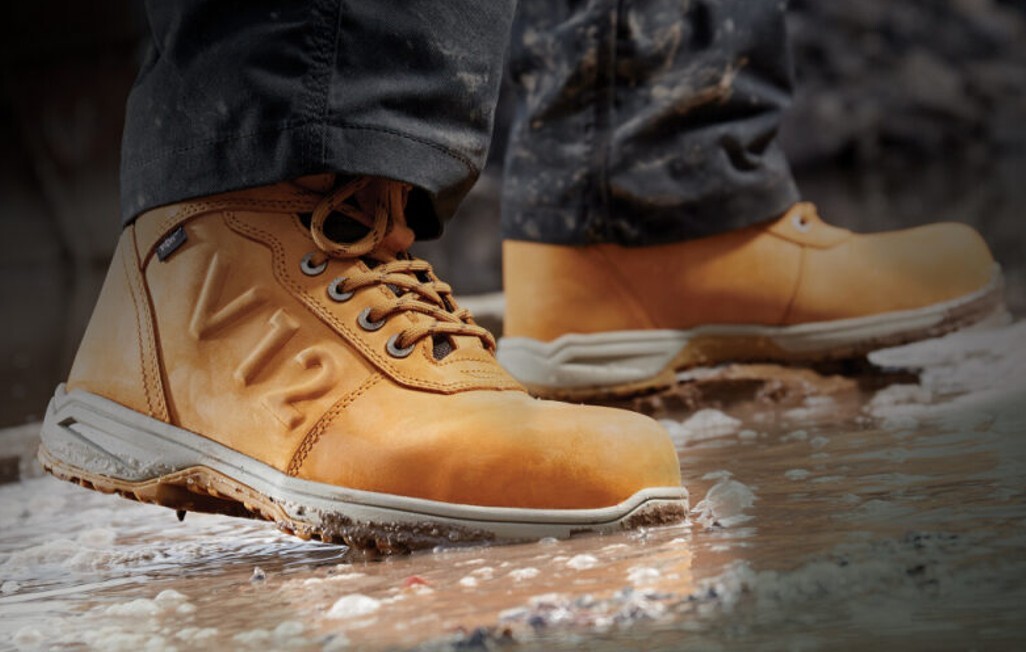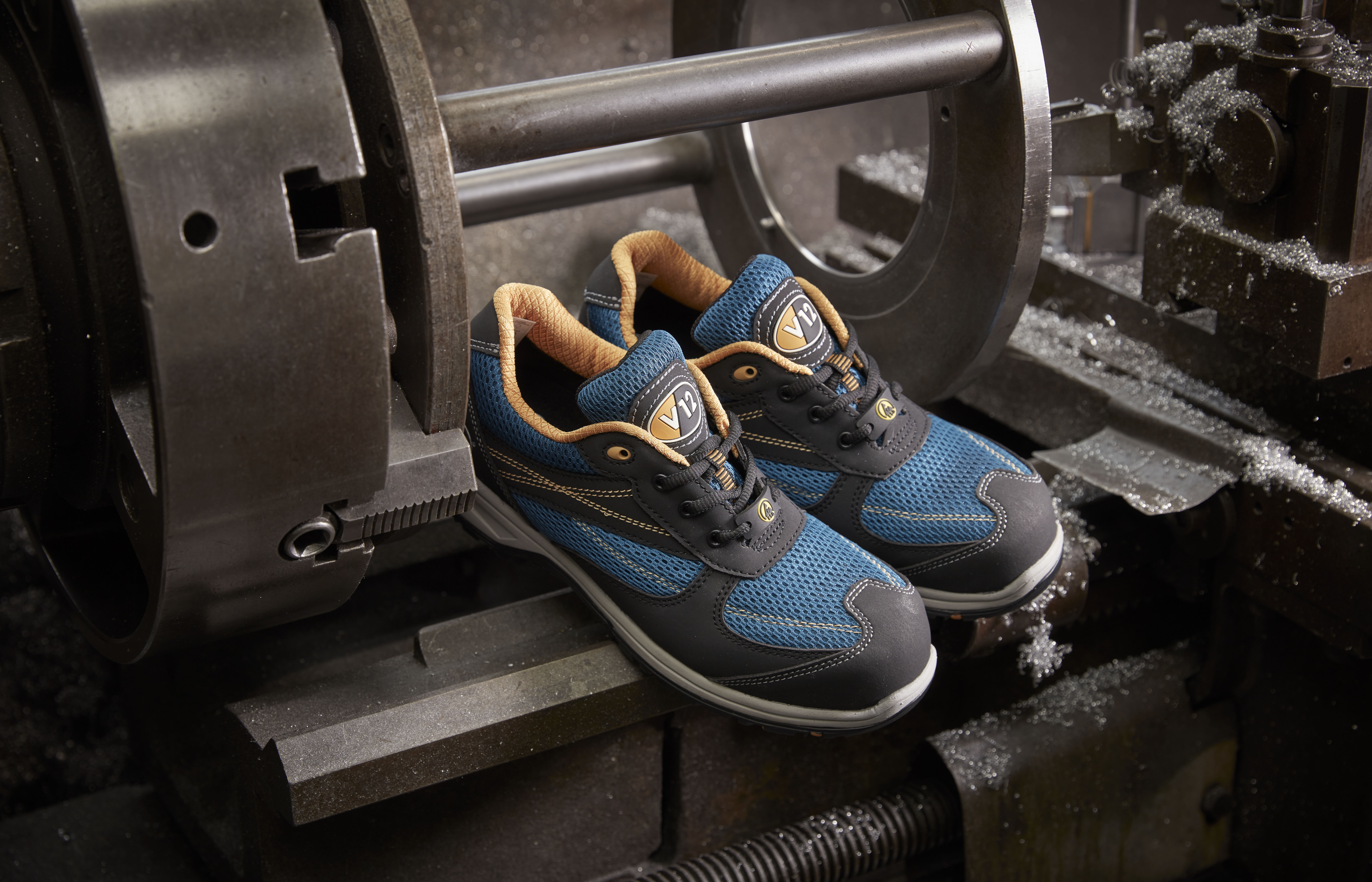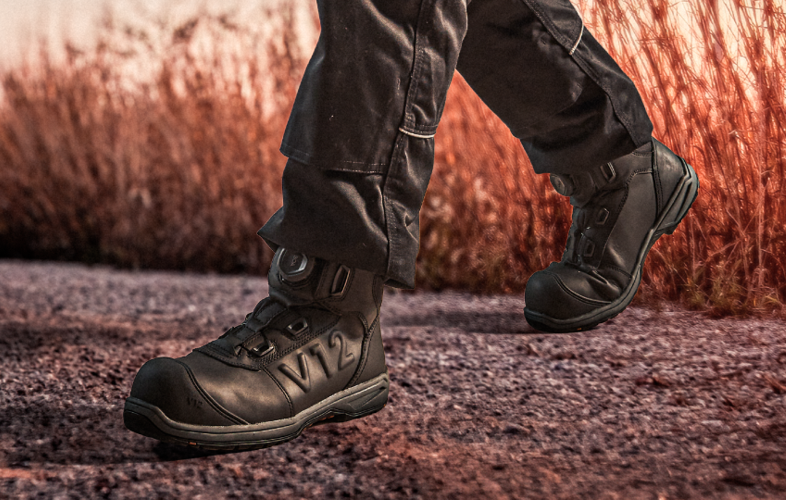The drive to reduce single-use plastic has never been higher on the global agenda. Yet despite this, plastic usage continues to rise at a worrying rate. This statistic from Less Plastic reveals the alarming state of affairs when it comes to plastic use:
‘Globally, we are now producing 320 million tonnes of plastic every year - the same weight as every human on Earth! - and 40% of this is for single-use purposes, used just once before being thrown away, destined to pollute for centuries.’When you read figures like this and see the images of landfill sights brimming with waste, it’s tempting to lose hope for a cleaner, greener future, because it’s hard to see how one person or one company can make a difference. It took a lot of time and people to create so much plastic – and it will take the same to reverse the damage. But when it comes to plastic use, the key is to aim small. Small changes lead to big results, because these types of changes are easily achieved. And the more small wins we can get, the bigger our appetite to reduce plastic waste on a larger scale will become.
In this article, you’ll see how easy it is to achieve quick but high-impact wins to reduce single-use plastic in your organisation. It’s all about attitude and action.
REUSE OR REFUSE?
The first quick win to reduce your plastic consumption is to be aware of the misconceptions surrounding it. And one of the things many still don’t consider is reusing plastic is still using plastic.
A lot of companies market themselves as ‘sustainable’ because they make their products with old or repurposed plastic, but this is problematic for 3 reasons:
- It still creates a need for and reliance on plastic.
- Incorporating old plastic into your product still uses energy, because materials have to be gathered, transported and made part of the manufacturing process. This all uses energy, which is still environmentally damaging.
- Old or reused plastic still release toxins such as microplastics into the environment.
So, step one in reducing your plastic use is to investigate whether you need to use plastic in your product at all, regardless of whether it’s new or recycled. Using recycled plastic might seem more environmentally friendly because it’s not adding to landfill, but it doesn’t stop people depending on it, and it still burns fossil fuels. Can you refuse, rather than reuse?
FIND OUT ABOUT PLASTIC
The phrase ‘knowledge is power’ is never more relevant than when it comes to making environmental changes. One effective way to get you and your employees passionate about stopping non-biodegradable waste is instead of just asking them to reduce plastic use, teach them about its effects and implications. That way, the change will be more meaningful and effective. Sharing facts with them like the ones below might start that process of inspiration through education.
- There may be more plastic than fish in the ocean by 2050. (World Economic Forum)
- The average time for a plastic bottle to completely degrade is at least 450 years.
- Put another way, if you were to throw away the plastic bottle you're drinking from now, it won't disappear for 20 generations.
- 17,000 plastic bottles are bought every minute. (earthday.org)
Put another way, by the time you finish reading this blog, a fifth of a million bottles will have been purchased globally. Which will all individually take 450 years to vanish from the planet. (That's 90 million years in total by the way)
When people become aware of information like this, you already have a quick single-use plastic win, because there’s a big chance people will be moved, shocked, or at least concerned by these statistics. And if you can motivate people at work to commit to plastic reduction, the chances are they will start making similar changes at home. And then that small change becomes a bigger change.
REDUCING PLASTIC IN YOUR PACKAGING
Now that the public look for and expect to see sustainably manufactured goods from companies, it should be a priority to look for ways to remove plastic from your products and packaging wherever possible. The call for a global treaty on plastic use is becoming increasingly strong, and one of its key concerns will be the full lifecycle of plastic, rather than just focussing on the plastic inside a product. This is why looking at packaging will be so important in reducing your plastic waste.

When V12 created Mukguard, our reusable overshoe, sustainability was at the heart of its development. Because MukGuard is made from durable and abrasion-resistant material, it lasts a long time, eliminating the need for disposable plastic overshoes. This is a big environmental win when you consider that one engineer can get through 14 KGs of plastic overshoes in one year.
But reducing materials in our packaging as well as product was top of the agenda. That’s why our MukGuard packaging was designed to be minimalist. Originally intended to come in a fully enclosed box, we realised that producing a cut away front would use significantly less material and potential energy to produce it. Happily, we also realised that the reduced packaging looked fantastic because the customer could see the quality material and handy attachment of the product.
More proof that sustainability can also mean profitability.
Other small plastic-reducing wins V12 have put into place include:
- Swapping our plastic hang tag attachments for metal ball bearing chains
- Removing the stuffed tissue previously inserted into our shoes
- Changing from plastic to paper shoe wrapping
- Removing all plastic from the shoe box
Now think about your product or service. Instead of trying to reinvent the plastic wheel, follow our example and implement achievable, realistic sustainable changes.
REDUCING PLASTIC IN YOUR PRODUCT
V12’s commitment to plastic reduction has allowed us to make significant single-use changes in many aspects of our footwear. We now use flame lamination as an alternative to glue which can release harmful toxins, as well as waterless dying meaning when we colour our shoe lining, absolutely no water is used.
However, quick single-use plastic wins don’t mean you have to U-turn completely on your product or compromise on quality – it's about taking out the plastic element when there’s an appropriate and more sustainable alternative and avoiding unnecessary plastic use. Because for us, there are particular safety reasons why small plastic elements still need to feature in our footwear.
For example, the eyelets (the holes that your laces are threaded through) on some of our boots are plastic because for people working in highly explosive environments, using metal eyelets would be extremely dangerous. Similarly, metal eyelets would be very problematic for people working in industries such as aviation or aerospace as they will be in contact with metal detecting scanners. So, while it’s important to seek plastic alternatives, it’s also important to understand where plastic serves a technical or safety need.
Another important thing to be aware of is that often, particularly in the safety industry, less plastic can mean more cost. For example, a boot that’s made of full grain leather will be a high-quality water-resistant material because it’s the unaltered, untreated animal skin (which just like our skin, is waterproof). However, less expensive boots will often be made of corrected or assisted leather, which is when the top hide is split lengthways so more layers can be used in other footwear, therefore saving cost. When the leather is split and therefore thinner, it’s often reinforced or treated with a plastic coating to achieve the same thickness but with less of the expensive full grain leather. As a result, a lot of safety companies are able to make PPE that’s affordable yet still effective through the use of plastic alongside more natural materials.
So again, it’s important to see where plastic has a role in your product, and whether that element can be removed, swapped out or is still achieving a financial or technical benefit.
LISTEN TO YOUR EMPLOYEES AND GET THEM INVOLVED
There are so many ways you can get quick wins in the workplace when reducing plastic – and a lot of employers miss the biggest and best resource to achieve this: their employees. They will have brilliant ideas on how your business can reduce plastic use, because they know the costs, logistics and processes better than anyone. A good start is to set up a group that meet regularly to discuss how to improve sustainability within the company and monitor and report on that progress. Alternatively, you could elect a sustainability ambassador or ‘plastic reducing rep’ from your staff who could gently encourage better sustainability habits amongst colleagues. Ideas the group could start with might include:
- Having a plastic free week or month in the workplace
- A plastic amnesty in the kitchens of your offices and sites
- Organising a fundraiser for a charity who are combatting single-use plastic
These infographics from Less Plastic show some great examples of small but effective changes in the workplace to reduce single-use plastic.
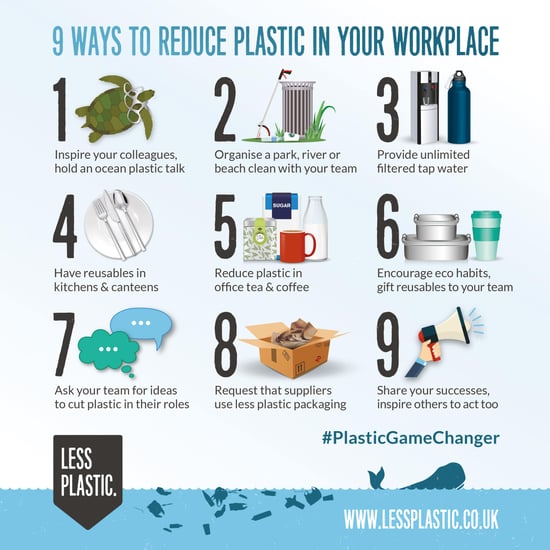
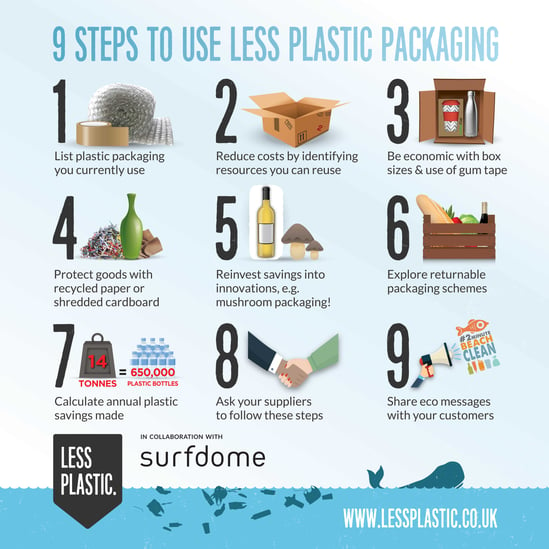
BIKE TO WORK SCHEME
This sounds like a fairly minor initiative compared to the global plastic problem we currently face, but try to keep circling back the idea of the power of small changes. If they are embraced by enough people, they become big changes. The government’s Transport and environment statistics show us how urgent the need for alternative travel methods are with the following facts:
‘Transport produced 27% of the UK's total emissions in 2019. Of this, the majority (91%) came from road transport vehicles.’
While it’s a wider environmental initiative rather than a plastic-focussed drive, a bike to work scheme can have a huge emissions impact, increase the fitness and mental well-being of your workforce, and it’s another way to get people fired up about making a climate difference.
SMALL CHANGE LEADS TO BIG CHANGE
So hopefully it’s clear now that the impact just a few small changes by a few people can make on our plastic use is massive. Whether it’s in design, development, packaging or logistics, with a bit of knowledge and passion, your business can make a huge impact to the statistics at the start of this piece.
Want to find out more about plastic use and sustainability? Read our blog below.

-1.png)


